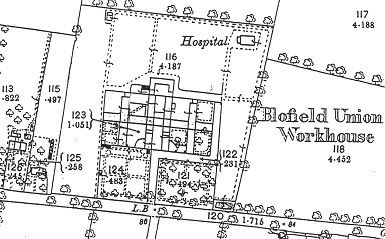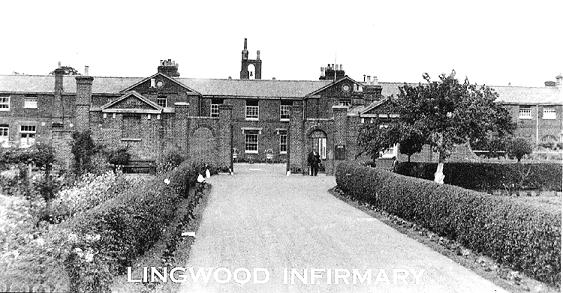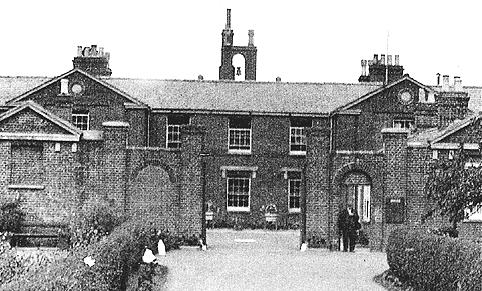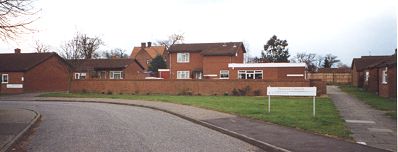Blofield, Norfolk
Up to 1834
A Parliamentary report of 1776-7 recorded a small parish workhouse in Reedham accommodating up to 3 inmates.
A 'House of Industry' was erected at Acle in 1788 for a Gilbert Union of seven parishes (Acle, Buckenham, Burlingham St Andrew, Burlingham St Edmund, Cantley, Hassingham and Upton-cum-Fishley), with ten other parishes subsequently joining from around 1805. In 1832, the workhouse inmates comprised six males aged from 12 to 83, and three Females from 10 to 54. A fire on 7 November 1834, caused by a defect in the chimney, destroyed the upper part of the building but none of the 30 inmates was harmed. It is unclear if the building was reinstated. Its exact location is also uncertain although a tithe map of 1838 identifies a 'Workhouse Field'.
After 1834
Blofield Poor Law Union was formed on 5th October 1835. Its operation was overseen by an elected Board of Guardians, 41 in number, representing its 32 constituent parishes as listed below (figures in brackets indicate numbers of Guardians if more than one):
Norfolk: Acle (3), Beighton, Blofield (3), Bradestone, Brundall, Buckenham Ferry, Burlingham St. Andrew, Burlingham St. Edmund, Burlingham St. Peter, Cantley, Freethorpe, Great Plumstead, Halvergate (2), Hassingham, Hemblington, Limpenhoe, Lingwood, Little Plumstead, Moulton, Postwick, Ranworth with Panxworth, Reedham (2), South Walsham, Southwood, Strumpshaw, Thorpe next Norwich (3), Tunstall, Upton with Fishley (2), Walsham South St. Mary, Walsham South St. Lawrence, Wickhampton, Witton, Woodbastwick.
The population falling within the union at the 1831 census had been 9,815 - ranging from Buckenham (population 49) to Blofield itself (692). The average annual poor-rate expenditure for the period 1833-35 had been £5,816 or 12s.10d. per head.
The new workhouse was built 1837 at Lingwood to a design by John Brown the Norfolk county surveyor. The Poor Law Commissioners authorised an expenditure of £5,810 on construction of the building which was to accommodate 250 inmates. Brown designed several other Norfolk workhouses at Docking, Henstead and Yarmouth, as well as ones in Suffolk (Plomesgate, Stow), and Essex (Colchester).
Brown's design for Blofield adopted a double-cruciform plan similar to the one at Henstead. Its layout can be seen on the 1880 map below.

Blofield workhouse site, 1880.
A separate hospital stood at the north-east of the site.

Blofield workhouse entrance from the south.
© Mike Page.

Blofield workhouse entrance from the south.
© Mike Page.
In 1894, the British Medical Journal set up a "commission" to investigate conditions in provincial workhouses and their infirmaries. Following a visit to the Blofield establishment, the commission's report noted an inconvenient separation of the female and male infirmaries, with conditions in the latter described as "squalid" and "dreary, comfortless, and crowded". There were no proper baths or running water. The sole nurse was untrained and assisted by a pauper "wardsman" who, at night, provided the only form of nursing attendance. Further details are available in the full report.
After 1930, the workhouse became a Public Assistance Institution known as Homelea, housing the elderly, chronic sick, single mothers, children etc.
The workhouse buildings have now been demolished. Housing and residential care accommodation now stands on the site.

Blofield former workhouse site, 2000.
© Peter Higginbotham.
Staff
Inmates
Records
Note: many repositories impose a closure period of up to 100 years for records identifying individuals. Before travelling a long distance, always check that the records you want to consult will be available.
- Norfolk Record Office, The Archive Centre, Martineau Lane, Norwich NR1 2DQ. Relatively few records survive - holdings include: Guardians' minute books (1835-1930 with gaps); Ledgers (1837-1930 with gaps); etc.
Bibliography
- Pauper Palaces by Ann Digby (Routledge & Kegan Paul, 1978)
- Times and Years: A History of the Blofield Union Workhouse by Audrey Serreau (Peter Morrow, 2000)
Links
Acknowledgment
- Thanks to Mike Page for the picture of the workhouse.
Unless otherwise indicated, this page () is copyright Peter Higginbotham. Contents may not be reproduced without permission.


